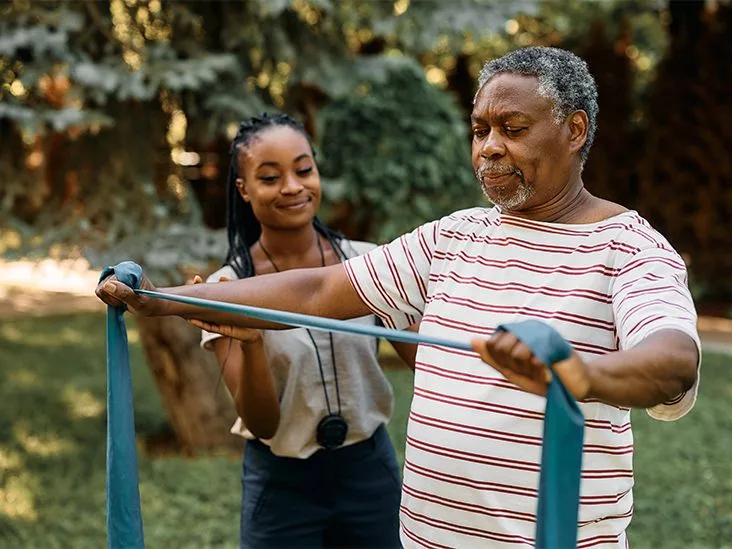Hey there, friend. If you’ve ever wondered why you feel “off” when a few weeks go by without a good workout, you’re not alone. Recent research shows that losing muscle – especially the jaw‑muscle called the temporalis – can raise your odds of developing dementia by roughly 60 %. That sounds scary, but the good news is that muscle loss is something we can see, measure, and, most importantly, fight.
Below you’ll find a straightforward, down‑to‑earth guide that explains the science, points out who’s most at risk, and offers simple steps you can start today. Think of it as a coffee‑chat with a friend who just happens to love a bit of science.
Why Muscle Matters
What Is Sarcopenia?
Sarcopenia is the fancy term for age‑related muscle loss. It isn’t just “getting a bit flabby”; it’s a decline in both muscle size and strength that can start as early as your 40s. The condition is usually measured by body‑composition tools (DXA scans) or, more cheaply, by looking at the thickness of the temporalis muscle on a brain MRI.
The Temporalis Clue
Why does a jaw‑muscle matter for your brain? The temporalis sits right beside the skull and moves your lower jaw. Researchers found that its cross‑sectional area mirrors overall skeletal‑muscle health. In other words, a tiny temporalis often means tiny muscles everywhere else.
According to a MedPageToday report, participants with a smaller temporalis were about 60 % more likely to develop dementia over a five‑year follow‑up.
Key Study Snapshot
At the 2024 RSNA meeting, Johns Hopkins scientists examined 621 cognitively healthy adults (average age 77) from the Alzheimer’s Disease Neuroimaging Initiative. They manually traced the temporalis muscle on each MRI and split the group into “large” and “small” muscle categories. Over a median of 5.8 years, the “small” group showed:
- Higher dementia incidence (hazard ratio 1.59)
- Steeper drops in memory‑composite scores
- Accelerated loss of brain volume, especially in the hippocampus
Quick Visual
| Group | Dementia Rate | Memory Score Change | Brain Volume Loss |
|---|---|---|---|
| Large Temporalis | 2.5 % | −0.12 points/year | −0.8 %/yr |
| Small Temporalis | 3.5 % | −0.21 points/year | −1.3 %/yr |
How Muscles Affect Brain
Biology Behind the Link
Muscle isn’t just for moving groceries. It’s an endocrine organ that releases myokines – tiny proteins that travel through the bloodstream and can protect brain cells, reduce inflammation, and improve insulin sensitivity. When muscle shrinks, those protective signals dwindle, leaving the brain more vulnerable to the same metabolic stresses that fuel Alzheimer’s disease.
Inflammation & Insulin Resistance
Low muscle mass often coincides with higher systemic inflammation (think “bad” cytokines) and insulin resistance. Both are well‑known dementia risk factors. A 2023 Swiss longitudinal study found that men who lost more than 5 % of their fat‑free mass (FFMI) over six years showed a faster decline on the Mini‑Mental State Exam (MMSE) than those whose muscle stayed stable (Swiss study).
Brain‑Volume Changes
When muscle loss progresses, MRI scans often reveal shrinking of the hippocampus and frontal cortex – the brain regions most responsible for memory and executive function. This structural loss is exactly what the temporalis‑muscle study linked to a higher dementia risk.
Who Is At Risk
Age Brackets
Risk climbs sharply after age 75. While anyone over 60 can develop sarcopenia, the combination of age‑related hormonal shifts, reduced activity, and poorer nutrition makes the elderly especially vulnerable.
Sex Differences
The Swiss cohort showed that men’s cognitive decline was more tightly tied to decreases in muscle mass than women’s. That doesn’t mean women are safe – just that the relationship may manifest a bit differently, perhaps because women tend to retain more subcutaneous fat, which can mask early muscle loss on basic scales.
Other Dementia Risk Factors
Muscle loss often rides shotgun with other red flags:
- APOE ε4 genotype
- Cardiovascular disease (high blood pressure, diabetes)
- Sedentary lifestyle
- Poor diet low in protein, vitamin D, or omega‑3s
When these stack up, they amplify the “muscle‑brain” connection, turning a manageable problem into a serious health threat.
Take Action Now
Resistance‑Training Basics
Strength training is the single most effective weapon against sarcopenia. You don’t need a massive gym membership – a set of dumbbells, resistance bands, or even body‑weight moves work wonders. Aim for 2–3 sessions per week, 8–12 repetitions per exercise, focusing on major muscle groups (legs, back, chest, core).
Nutrition Tips
Protein is king. Older adults should target about 1.2 g of protein per kilogram of body weight daily. Spread it across meals to keep muscle protein synthesis humming. Don’t forget vitamin D (helps calcium absorption) and omega‑3 fatty acids (anti‑inflammatory). A quick snack idea: Greek yogurt with berries and a sprinkle of chia seeds.
Screening & Early Detection
If you’re already getting a brain MRI for any reason, ask your doctor whether they can also measure the temporalis muscle. It’s a free “add‑on” that costs nothing extra and could flag muscle loss early. For those without MRI access, a simple hand‑grip dynamometer or a sit‑to‑stand test can give a good sense of muscle strength.
30‑Day Muscle‑Brain Boost Planner (Download)
Below is a quick starter checklist you can copy into a notebook or phone reminder:
- Day 1‑7: Walk 20 minutes + 2 × body‑weight squats (10 reps)
- Day 8‑14: Add resistance band rows (12 reps × 3 sets)
- Day 15‑21: Increase protein intake by 20 g per day
- Day 22‑30: Try a new activity – yoga, swimming, or a dance class
Real Stories & Expert Insights
John’s Turnaround
John, 78, was diagnosed with mild cognitive impairment last year. He started a supervised resistance‑training program three times a week, added a protein shake after each session, and got his vitamin D levels checked. After six months, his MMSE score improved by two points, and a follow‑up MRI showed a modest increase in temporalis thickness.
Expert Quote
Dr. Kamyar Moradi, post‑doctoral fellow at Johns Hopkins, explained, “Measuring temporalis muscle size offers an opportunity for skeletal muscle quantification without additional cost or burden in older adults who already have brain MRIs.” His comment, reported by AuntMinnie, underscores how a single scan can give us a double‑dose of health info.
Clinician Tip
Primary‑care doctors can incorporate a simple “muscle health” question into annual wellness visits: “Do you feel weaker when climbing stairs? Have you lost weight unintentionally?” If the answer is “yes,” a referral for DXA or a brief physical‑therapy assessment can catch sarcopenia before it fuels cognitive decline.
Myths & Truths
Myth: Muscle Loss Is Inevitable
Truth: While some loss is normal, targeted exercise can preserve 80 % or more of baseline strength well into your 80s. Think of muscles like a garden: you have to water them regularly, or they’ll wither.
Myth: Only Big Muscles Count
Truth: Even small muscles, like those in your face, reflect whole‑body status. That’s why the temporalis muscle is such a powerful early marker.
Myth: Exercise Won’t Help After Dementia Starts
Truth: Physical activity can still slow cognitive decline and improve quality of life for people already diagnosed with dementia. Movement is brain food, period.
Key Takeaways
One‑Sentence Answer
Loss of skeletal muscle, especially the temporalis jaw muscle, is linked to a roughly 60 % higher risk of developing dementia, but regular strength training, adequate protein, and early screening can dramatically lower that risk.
Three Quick Actions You Can Start Today
- Move. Do at least two resistance‑training sessions a week – body‑weight squats, push‑ups, or resistance‑band rows.
- Fuel. Aim for 1.2 g protein/kg body weight daily; add vitamin D and omega‑3 sources.
- Check. Ask your doctor about a temporalis‑muscle measurement if you’re getting a brain MRI, or try a simple hand‑grip test at home.
So, what do you think? Have you noticed a dip in your strength lately? Or maybe you’ve already started a new workout routine and are curious about how it might protect your brain? Drop a comment below, share your story, or ask any questions you have. Let’s keep each other motivated on this journey to stronger muscles and sharper minds.


















Leave a Reply
You must be logged in to post a comment.